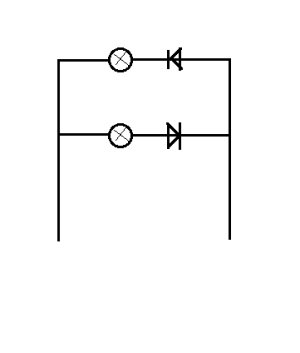VicS
Well-Known Member
.
I think there is a way of doing the diode switching even is the light isn’t polarity sensitive. It appears possible with 4 diodes, maybe with just 2 on the negative connection to the fitting.
Your circuit will work when the lights ARE polarity sensitive but maybe not if they are not.
What I described in #12 will work for filament bulbs or led lights which are not polarity sensitive


